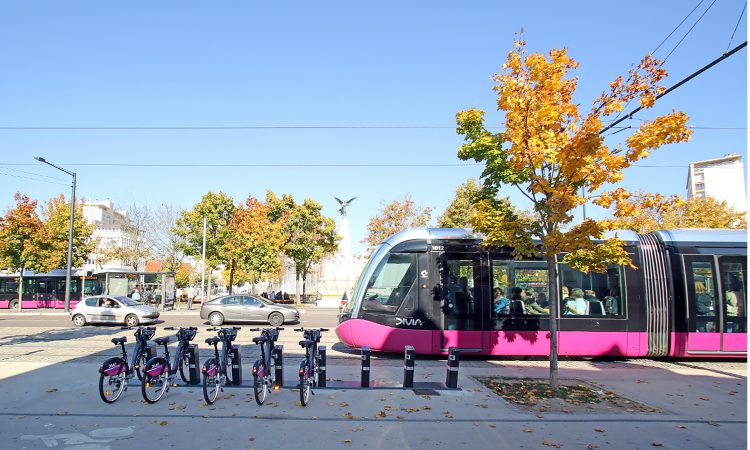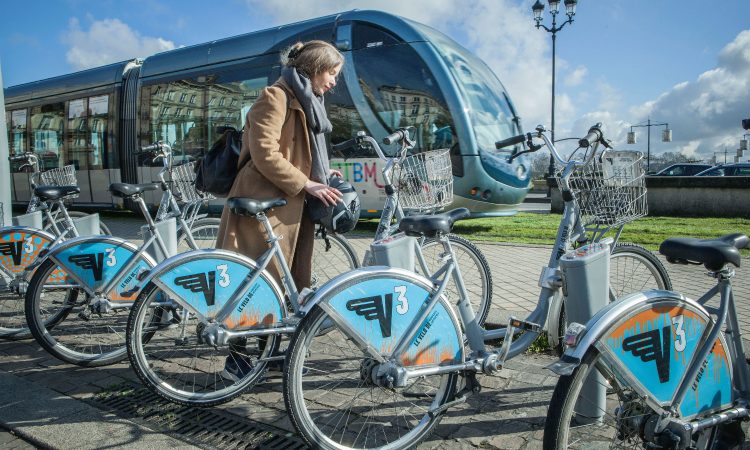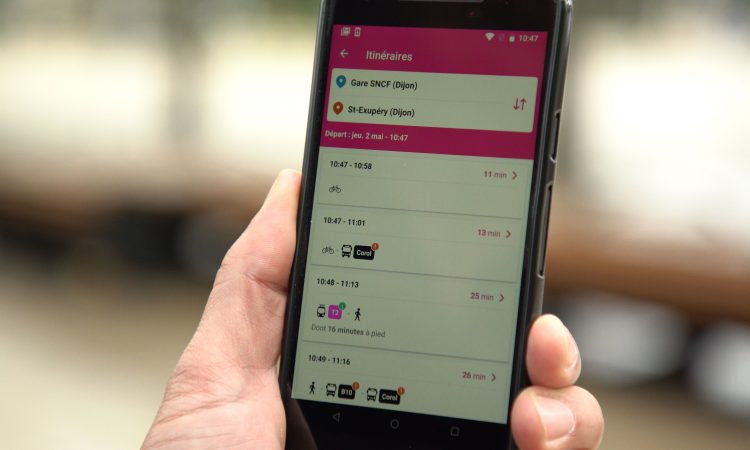MaaS: A piece of the mobility integration puzzle for a richer transport experience
- Like
- Digg
- Del
- Tumblr
- VKontakte
- Buffer
- Love This
- Odnoklassniki
- Meneame
- Blogger
- Amazon
- Yahoo Mail
- Gmail
- AOL
- Newsvine
- HackerNews
- Evernote
- MySpace
- Mail.ru
- Viadeo
- Line
- Comments
- Yummly
- SMS
- Viber
- Telegram
- Subscribe
- Skype
- Facebook Messenger
- Kakao
- LiveJournal
- Yammer
- Edgar
- Fintel
- Mix
- Instapaper
- Copy Link
Posted: 9 March 2023 | Julie Sulli - Keolis Group | No comments yet
Julie Sulli, MaaS Group Project Leader at Keolis Group, discusses how Mobility-as-a-Service can be used to deliver a personalised travel experience for people and communities, as well as why it is only one piece of the mobility integration puzzle to achieve modal shift and drive the transition away from the private car.


Credit: Keolis Group
Today, more than ever, new market trends are throwing 20th century city and regional planning models into question. New ways of living and working, accelerated by various crises, have transformed the way that we move around and have increased passengers’ expectations toward public transport. At the same time, and despite ecological emergencies, private car use has not reduced.
New ways of living and working, accelerated by various crises, have transformed the way that we move around”
During these last two years, Keolis’ Prospective Team has led quarterly studies to understand citizens’ mobility choices and expectations. Apart from hygiene, three main issues were highlighted – the mobility offer’s attractivity, information and digitisation. This is where Mobility-As-A-Service (MaaS) comes in – when fully embraced.
MaaS applications: A personalised travel companion to promote and encourage alternatives to private car use
With 70 per cent of people equipped with a smartphone regularly using a transport app – generally several apps, in fact – a vast majority of customers (83 per cent) report that technology plays an essential role in simplifying their journey. They expect it to help them in choosing the right mode of transport at the right time, having access to multiple modes of transport, as well as optimising the route and duration of their journey1.
Way more than a single interface, MaaS apps should become the easy companion for all journeys, providing the peace of mind that we have all been waiting for”
Way more than a single interface, MaaS apps should become the easy companion for all journeys, providing the peace of mind that we have all been waiting for when choosing the itinerary that suits us best, according to our personal preferences – is it direct? Sitting? Faster? Accessible? Carbon footprint? – notifying us in real-time in case of disruption. They also need to offer an alternative, let us know if the self-service bike will be available, while guiding us throughout our journey – outdoor and indoor, from door to door, including walking and biking – within the same app.
The app’s accessibility is key in reaching the largest target of customers, so it’s important that they’re multi-lingual and easy to read, with vocalisation options. Above all, it’s crucial that these apps remain simple for people to use, however rich the functionalities and options.
Once fully used (known and mastered), MaaS apps could effectively encourage more environmentally friendly travel and change the way in which the limited space within cities is used more efficiently, by promoting new ways of getting from point A to B. It is not about fighting against private car use; it is about providing a simple tool that will encourage behavioural change towards using more sustainable mobility solutions.


Credit: Keolis Group – Once fully used, MaaS apps could effectively encourage more environmentally friendly travel and change the way in which the limited space within cities is used more efficiently.
MaaS: It is not only about an app
The multiplication of mobility options, industrial and technological partners, added to ever-evolving citizens’ needs and requirements, result in increasing complexity but also in a real opportunity to make regions and mobility more dynamic. It allows everyone to access a mobility solution adapted to their needs. Public transport authorities (PTAs) are in the best position to propose this global mobility offer that reflects their policy and objectives.
Our main challenge is to support PTAs in developing MaaS schemes tailored to their specific needs, expectations, communities, mobility offers and budget.
Our main challenge is to support PTAs in developing MaaS schemes tailored to their specific needs, expectations, communities, mobility offers and budget”
Keolis’ convictions to build an efficient MaaS scheme include designing an attractive integrated offer, ensuring governance and multi-stakeholder co-ordination, building a customised solution with the best partners and deploying a personalised and inclusive service.
Keolis Group is currently operating in 14 countries for 300 different PTAs. In France alone, Keolis is in charge of operating the transport network of major cities such as Bordeaux (six tramway lines, bus networks, bike-sharing, on-demand transport, river shuttles, etc.) and Lille, as well as smaller cities, peri-urban and rural areas, where school transports, regional trains and urban buses are the backbones of public transport. Wherever Keolis operates, passengers have both common and specific needs and expectations, and each territory presents its own specificities.
Of course, there are challenges in delivering such projects:
- Finding the proper balance between industrialisation and personalisation
- Managing the project’s governance, orchestrating public and private players, mobility and technological players. In Dijon, we are co-ordinating an environment of more than 10 mobility and technological partners to deploy the MaaS project
- Dealing with competition amongst mobility solutions, in order to not antagonise mobility solutions but offer complementary possibilities to citizens, promoting the best option at the right moment. For example, promoting walking in city centres in order to manage congestion in highly crowded city centre networks.


Credit: Keolis Group – With 70 per cent of people equipped with a smartphone regularly using a transport app, a vast majority of customers report that technology plays an essential role in simplifying their journey.
Championing evolution rather than revolution
It is now time to approach Mobility-as-a-Service as one piece of the mobility integration puzzle to achieve modal shift”
MaaS is a continuous evolution rather than a revolution, based on a progressive approach anchored in regional mobility realities and the PTA’s sustainable mobility policy. It is also key for it all to remain simple and easy for our customers, taking them by the hand in the evolution towards MaaS.
Keolis promotes a systemic approach to Mobility-as-a-Service. Considering all five dimensions of mobility integration is key to succeed. This includes:
- Integration of governance under the PTA’s leadership; for example, to manage the development of integrated or combined tariffications or multilateral contractual management
- Integration of mobility offers – having the best MaaS app will not be enough if there is no mobility option offered to citizens:
- Analysing mobility needs of citizens on a specific territory and adequation of current mobility offers, understanding the intermodal and multimodal behaviours and the barriers to its development
- Inventing and promoting ever-innovative and attractive modes, such as dynamic mobility on-demand, bike-sharing, car-sharing and carpooling.
- Integration of customer experience:
- In its digital experience, of course, through the app but also the website. Keolis benefits from its experience in multimodal passenger information and its cutting-edge multi- and intermodal journey planner, Navitia
- In ‘real life’, including field staff, commercial agencies, customer support; always offering a humanised option to customers, next to digitalised channels
- Designing infrastructures dedicated to multi- and inter-modality, such as intermodal mobility hubs.
- Integration of back-office:
- MaaS is not only a digital application but should rely on robust back-office systems, allowing a 360° view of the customers, for staff to have easy access to back-office information, for secure payments and secure management and redistribution of revenues.
- Integration of IT and data that will be key in building the roadmap of MaaS services:
- With a specific focus on the quality of input data
- Use of output data to better understand mobility behaviours and needs
- Scale of interoperability of the different systems involved in a MaaS project.
These five dimensions must be considered on the scope of all mobility options available. At Keolis, we propose a systemic approach – moving one lever in a consistent way with the other, supporting the PTA in orchestrating its global mobility policy and ensuring a continuous evaluation of the progress on each dimension as a tool to define the mobility integration roadmap. Our role is to support PTAs in making the right choices in this roadmap, to achieve inclusive and accessible transit for all.
It is now time to approach Mobility-as-a-Service as one piece of the mobility integration puzzle to achieve modal shift.
References


Related topics
Accessibility, Air Quality, Micro-mobility, Mobility Services, Multimodality, Passenger Experience, Public Transport, Sustainable Urban Transport
Issue
Issue 4 2022
Related modes
Bikes & Scooters, Bus & Coach, Tram
Related countries
France
Related organisations
Keolis Group
Related people
Julie Sulli








